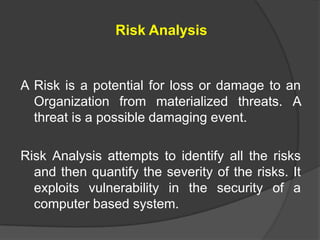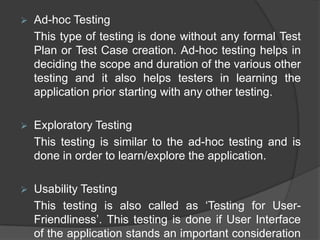This document discusses various types of software testing methods and strategies. It describes black box testing as treating software as a black box without knowledge of internal implementation. White box testing involves working with internal data structures and algorithms. Unit testing validates individual units of source code. The document outlines the aims, processes, advantages, and limitations of these different testing approaches.









































